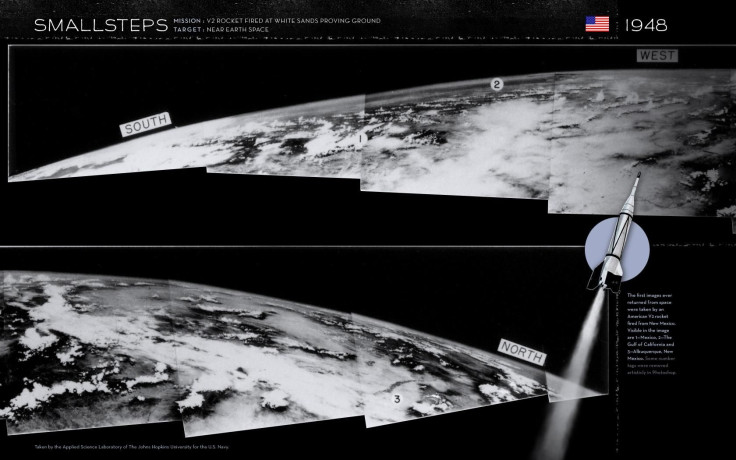Space Photos Before NASA: The Oldest Images Of Earth
When people think of the Space Race, they often think of the Russian satellite Sputnik and of Neil Armstrong and Buzz Aldrin taking humanity’s first steps on the moon during NASA’s Apollo 11 mission in 1969. But scientists were taking strides into space before any of that happened, producing remarkable photos that gave us a new view of the world we call home.
Some of this happened more than a decade before Sputnik, the Earth’s first artificial satellite, launched in 1957. They even predate NASA, which was founded in 1958 as a successor of the National Advisory Committee for Aeronautics (NACA).
Never forget your first

The first photo ever taken from space happened a lot earlier than most probably would guess, and was made possible using technology developed by an American enemy. On Oct. 24, 1946, a V-2 rocket captured from the Germans during World War II took grainy, black-and-white photos of Earth. Although the rocket crashed back down to the ground not long after, destroying the camera, the film was in a steel case that protected the film from the impact, according to Air & Space Magazine.

These were not the first photos taken from above the Earth’s surface, but previous photos that captured the planet’s curvature were taken from air balloons, several times lower than this suborbital rocket flight.
The V-2 rocket camera’s image is distinct from the air balloon shots in another important way: It was taken high enough to see the dark void of space in which Earth spins.
Better than 100

Half a year after the first space photo landed back on Earth, scientists sent up another captured German rocket that went even farther to show us what lay beyond our world. On March 7, 1947, a V-2 missile sent back more black-and-white images, but this time they were taken from more than 100 miles above the Earth’s surface. More missions followed from there, giving scientists pictures they could stitch together to make a more comprehensive view of the planet.
Zoom! Straight to the moon

The first photo scientists took of Earth from the moon was snapped on Aug. 23, 1966. A spacecraft was in the “vicinity of the moon” at the time of the shot, according to NASA. “The photo was transmitted to Earth by the Lunar Orbiter I and received at the NASA tracking station at Robledo De Chavela near Madrid, Spain.”
This spacecraft had already orbited 15 times by the time it took this image, which shows a crescent Earth that mirrors how we often see the moon from our planet.
Lunar Orbiter I, which was scoping out Apollo landing sites for the first human moon mission, took a ton of photos of the lunar surface, showing scientists the moon in a way they had never before been able to experience.
© Copyright IBTimes 2025. All rights reserved.



















